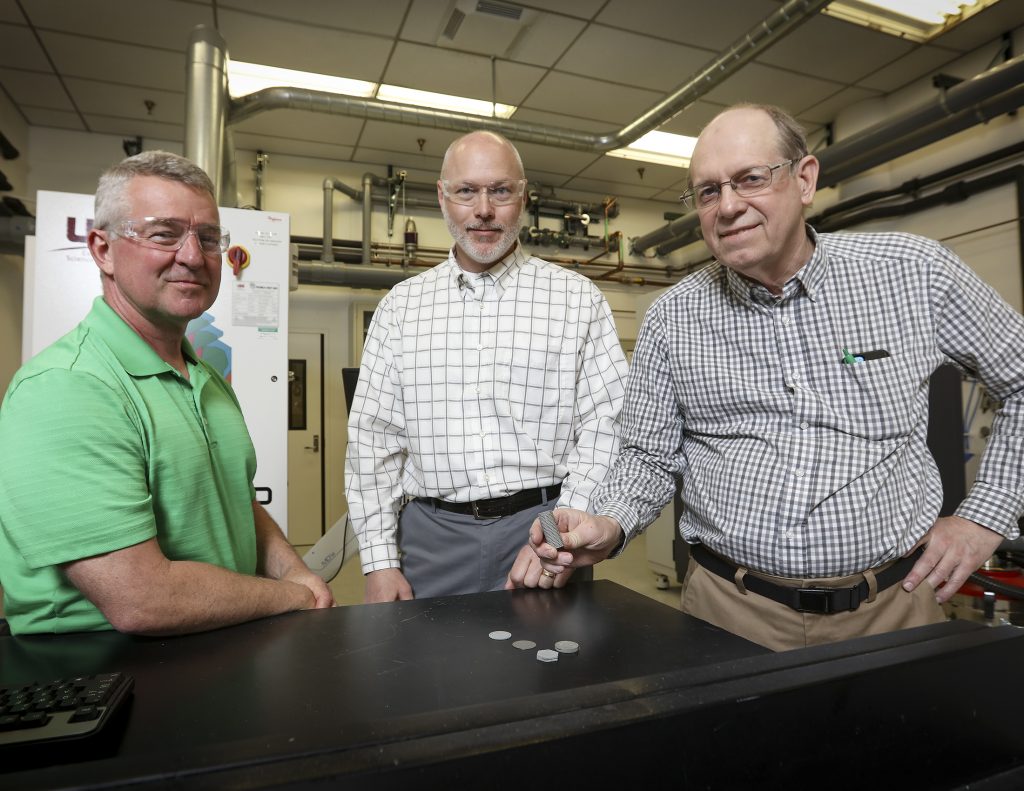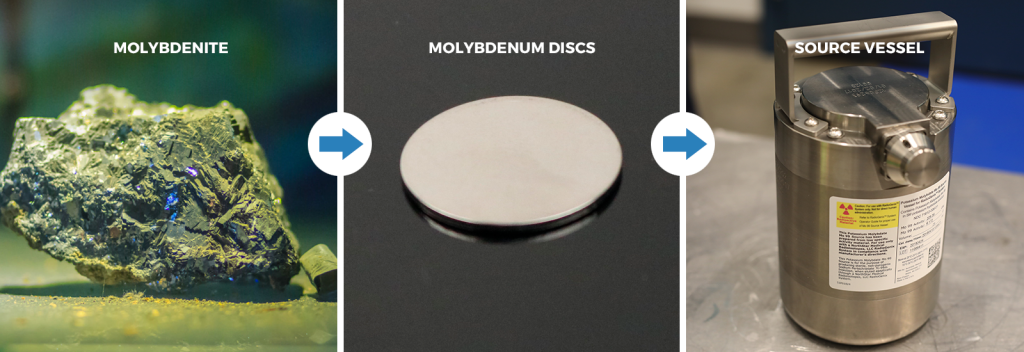For the first time in around 30 years, radioactive isotope molybdenum-99 (Mo-99) has been produced in the United Sates – 3D printed at Oak Ridge National Laboratory (ORNL).
Vital to the production of the most commonly used radio-imaging isotope in modern medicine, the 3D printed Mo-99 presents an important step towards commercial production of the material for U.S. healthcare.
It is also a crucial part of an international effort to limit the production of highly enriched uranium (HEU) – an element that has created widespread concern due to its use in nuclear weapons, and ability to fly under the radar.

Diagnosis by nuclear medicine
When injected into the body, medical radiostopes serve to illuminate an organ when scanned by a gamma camera. The technique is commonly used in hospitals to determine the presence heart disease or diagnose cancer.
Technetium-99m (Tc-99m) is the the world’s most commonly used radioisotope for diagnostic imaging. In fact, according to the World Nuclear Association it is used in around “40 million procedures per year, accounting for about 80% of all nuclear medicine procedures worldwide.”
Mo-99 is the parent isotope of Tc-99m. Mo-99 has a half-life of 2.75 days and, as it degrades, it produces Tc-99 which has a half-life of only 1 day.
The low half-life of Tc-99 is what makes it such a desirable radiotracer in medicine – limiting a patient’s exposure to radioactive matter.
Eradicating highly enriched uranium
HEU is generally used in the process of making Mo-99. Wishing to limit the use of such a potentially dangerous material, cut the cost of Mo-99, and also meet a national demand for the radioisotope, ORNL teamed up with NorthStar Medical Radioistopes. The product of the collaboration is 3D printed discs of non-uranium Mo-99.

ORNL scientists used a specially made Renishaw selective laser melting (SLM) 3D printer to produce the disks from a source Mo-100 powder.
A smaller, accommodating powder bed reduced the cost of filling the 3D printer with source Mo-100 powder. Material wastage is cut through the ability to recycle print-bed material for the next 3D printed batch. And, furthermore, Mo-99 disc production is simplified, as ORNL metallurgist Rick Lowden explains, “Now we have only four steps instead of dozens.”
For updates on the progress of this and more subscribe to the 3D Printing Industry newsletter, follow us on Twitter and like us on Facebook.
Sign up to 3D Printing Jobs to post and find new opportunities near you.
Featured image shows nuclear imaging of the human heart. Image via Cardiology Associates



